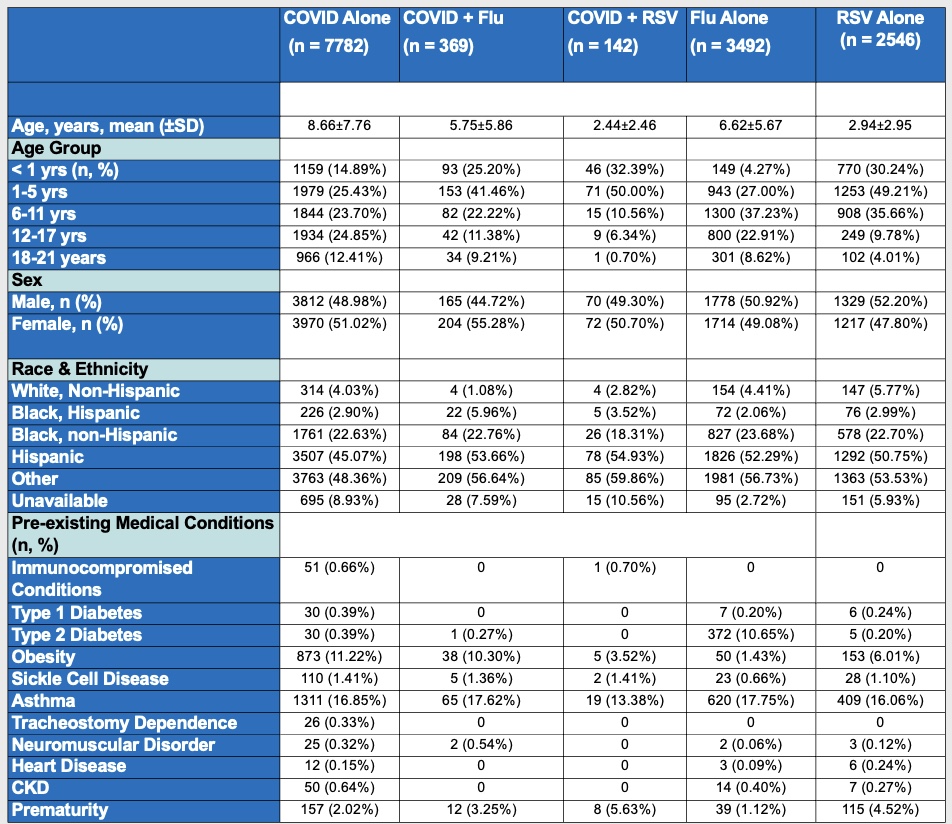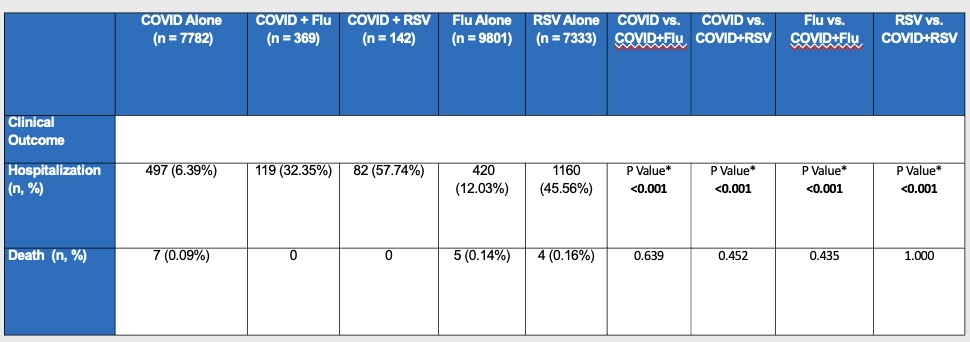Infectious Diseases
Session: Infectious Diseases 1
583 - PediCoViral: Pediatric Clinical Outcomes of COVID-related Co-viral Infections
Friday, May 3, 2024
5:15 PM - 7:15 PM ET
Poster Number: 583
Publication Number: 583.540
Publication Number: 583.540
- KS
Kiera Sarill, MD (she/her/hers)
Resident Physician
The Children's Hospital at Montefiore
New York, New York, United States
Presenting Author(s)
Background: During the earlier phase of the COVID-19 pandemic, published reports demonstrated low rates of COVID co-viral infections. Upon relaxing public health measures, the epidemiology of known respiratory viral pathogens had dramatically shifted as the pandemic evolved. Little is known about the clinical impact of co-viral infections in children post-Omicron wave.
Objective: This study investigates the clinical outcomes among children, adolescents, and young adults who test positive for SARS-CoV-2 [COVID] alone compared to those with COVID co-viral infection with either RSV or Influenza [Flu] A/B [denoted as COVID+].
Design/Methods: We conducted a retrospective study of subjects ≤ 21 years of age who tested positive for SAR-CoV-2 presenting to the Children’s Hospital at Montefiore, Bronx, NY from 12/1/2021 to 1/15/2023. Laboratory confirmation was established using a multi-target PCR assay for influenza A/B, RSV, and SARS-CoV-2. The primary outcomes were hospitalization and mortality. Demographic information and patient outcomes were extracted using ATLAS database.
Results: Among 8293 subjects who tested positive for COVID, the mean age of children with COVID alone was 8.7 years (SD=7.8), whereas the mean age of those with COVID+ was 5.0 years (SD=4.4). Hospitalization rates for COVID alone, COVID+Flu, and COVID+RSV were 6.4%, 32.3%, and 57.7%, respectively (p < 0.001). COVID positive children ≤ 5 years of age with or without a second virus were more likely to be hospitalized than other age group (p < 0.001). When comparing COVID+Flu vs. Flu alone (32.3% vs 12%, p < 0.001) or COVID+RSV vs. RSV alone (57.7% vs. 45.56%, p< 0.001), hospitalizations rates were higher for those with COVID co-viral infections. No increase in mortality was observed across groups.
Conclusion(s): This single-center study demonstrates that coinfection with RSV or Influenza may be associated with increased risk for hospitalization in pediatric patients with the highest rates of hospitalization occurring in the youngest children. These findings suggest that the presence of two viral infections may drive increased morbidity.


Image 11-1-23 at 7.18 PM.jpeg
